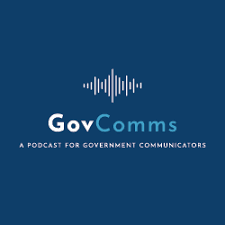How many of us have reflected on 2020 and come to the realisation that it’s been a year of learning and of appreciating what’s important and what needs to change?
I dare say many of us have, particularly Executive teams and Senior Leadership teams across organizations be they Small to Medium Enterprises, Not-for-Profits, Corporations, or Government.
Earlier this month, I was in a half-day senior communication leaders workshop doing just that. Admittedly it was a bit surreal as it was the first time, I met most of my colleagues I’d worked with for five months deep in the pandemic response and that I’d been in an in-person workshop for nine months.
We explored and affirmed what we’re good at, what we’ve learned, what to keep, and what to change. But, most importantly our focus was to affirm our purpose and ensure it aligns with the organizational purpose. This is a critical step to understand the context and have a shared understanding of why we do what we do, what we do, and for whom. It is the guiding star for strategic choices, and for aligning our strategy, capability, and systems to enable us to fulfil that purpose. Just imagine if all organizations were able to fulfil their purpose and deliver on their promises.
You are probably thinking well that makes sense and isn’t that what most of us do? Unfortunately, it’s not.
Alignment is a blind spot for many organizations, not because leaders or communication professionals don’t believe it’s important but because they don’t understand how to do it or are not committed to it.
I’ve seen this through the global studies I’ve done with Wayne Aspland in 2018 and in 2020.
Aligning to purpose – our blind spot
In our 2018 study, only 35% of senior communication leaders felt their organization was aligned to the corporate purpose, and only 40% used corporate purpose as a key part of their employee communications (also the results for corporate strategy, strategic narrative, vision, or brand platform were worse).
Since then we’ve seen no shortage of discussion and articles about corporate purpose, with the Business Roundtable shining the light on its value for driving performance. The pandemic has shown that the power of purpose is greater when it is leveraged to have an impact on the greater good beyond business.
A McKinsey study of 1,000 US-based companies found that 82% affirmed the importance of purpose yet only 42% thought their purpose statements had impact. This was supported in an HBR study where less than half the companies surveyed had articulated a strong sense of purpose or used it to guide decision-making.
Beyond these studies, there are plenty of tangible examples where aligning to corporate purpose has been fundamental to making the right strategic choices and driving performance during volatile and uncertain times.
Early in the pandemic, Airbnb CEO, Brian Chesky spoke about their purpose as their North Star guiding their decision-making principles and giving them permission to morph their business strategy in response to opportunities and threats. We’ve seen how this has worked for them thus far with their recent IPO valuation way beyond Chesky’s pre-pandemic expectations.
One of my clients, a CEO of a national media business in a global faith-based organization, reminded me of how pivotal their well-articulated purpose statement was to their survival through the pandemic, and now being in a position where they are thriving. She said:
“That purpose statement, combined with the comprehensive analysis that underpinned it, has played an instrumental role in inspiring the team to transform an established and somewhat stagnant ministry into an energised dynamic one with a keen sense of mission and clarity of purpose like never before. It has also driven innovation and growth and not only helped us survive but thrive – through a purpose-driven mission of service – throughout the tumultuous months of the Covid-19 pandemic.”
Return on Purpose
You’ll recognise misalignment in your organization. It’s when people are unclear on the direction or their remit, silos exist, people pursue their own agendas, engagement is an issue, there’s conflict and tension, opportunities are missed, or systems don’t support the capability needed. The list can go on and on. You can have misalignment of systems, workflow processes, culture, capability, strategy, and to purpose.
Alignment can break down along the value chain within the organization, but ultimately, it’s alignment with corporate purpose that has the most significant impact.
Recently, research was done to examine the impact of purpose on the performance of over 200 brands. They found that companies aligned to an authentic and well-articulated purpose outperformed those companies with “low-purpose brands”.
- Companies that scored high on corporate purpose metrics outperformed low-scoring counterparts on measures of financial performance, market valuation, and shareholder value creation.
- “High-purpose brands” double their market value over four times faster than “low-purpose brands”
- During a crisis, the value creation advantage for companies scoring high on corporate purpose widened.
- There was a significant correlation between a company’s purpose and its financial performance, through higher productivity, growth, and employee retention.
IC’s opportunity
IC professionals have an enormous opportunity to unlock the inherent value in their organization and people to improve performance and influence the impact they can have on society.
It’s the shared understanding and alignment to corporate purpose, and in turn business strategy, where we employee communication professionals have the opportunity to build our impact and influence.
In our 2020 study, The Road to Alignment, Wayne and I created a methodology to build alignment. It consists of four steps:
- One VISION: executive support and set for success
- One STORY: build the narrative that unites everyone (this is where the purpose and direction are fundamental)
- One TEAM: align operations and enable leaders
- One VOICE: hold tension on the story
And five key principles for communication that are mandatory if you hope to succeed:
- Principle 1: know your enemy (identify the current state and gaps)
- Principle 2: alignment starts at the top (leader buy-in and commitment)
- Principle 3: shared understanding first, alignment second
- Principle 4: less communicating… more enabling communicators
- Principle 5: don’t stop (alignment is an emergent process)
There’s no doubt that the perceived importance of shared understanding and alignment was on the rise pre-pandemic, and this year has shown beyond a doubt that organizations can truly unlock the value that already exists in their people through better alignment.
Communication done well is a fundamental enabler of alignment, and in particular to purpose, strategy, culture, and our people.
Purpose matters. Alignment matters. People matter. They have always mattered. It just became so much clearer this year when organizations who had these principles at their core were much better placed to deal with the devastation of a pandemic.
And they will most certainly matter in 2021 when the economic fallout and wellbeing impact of Covid-19 will continue to shape the future of organizations across the globe.
This blog was published by Poppulo on 23 December 2020. Poppulo.com has useful resources on employee communications









